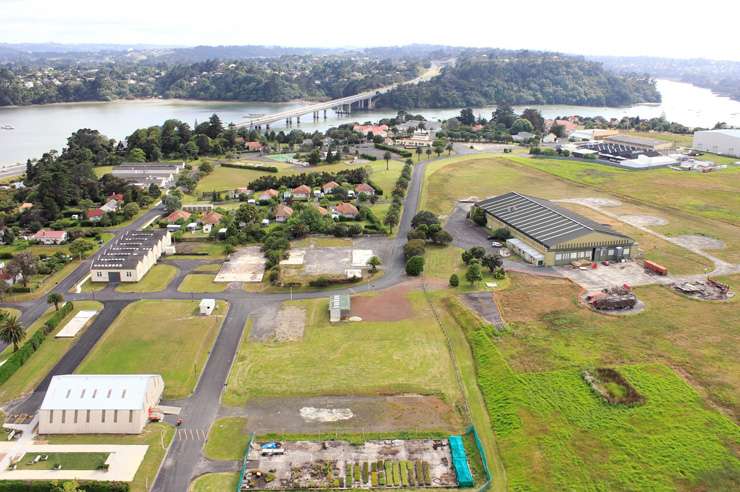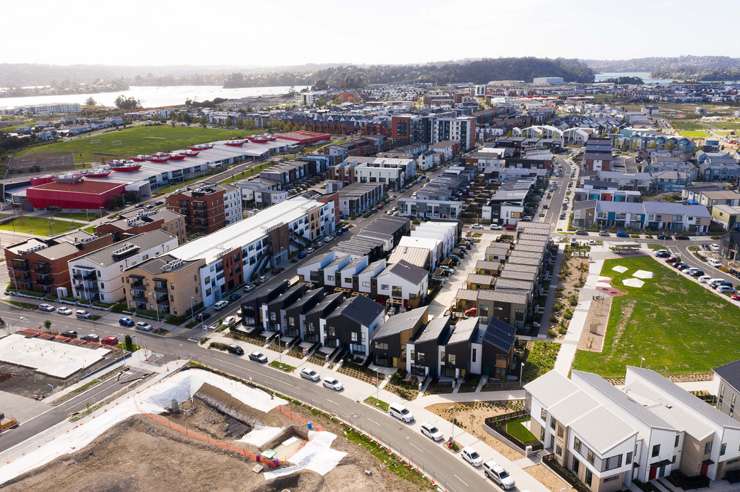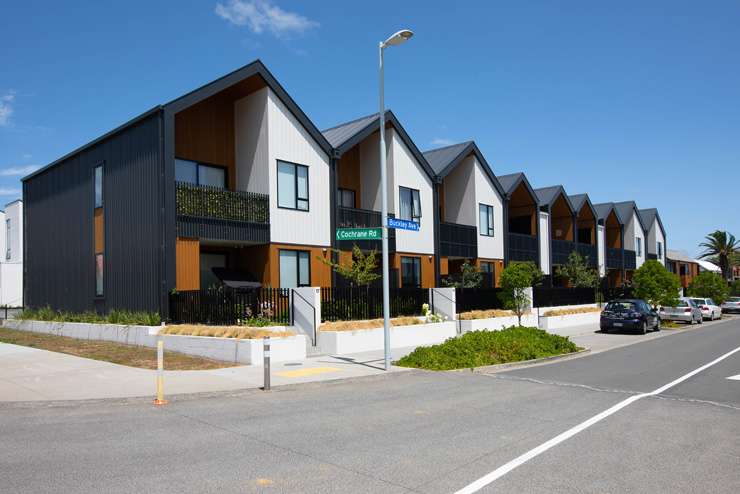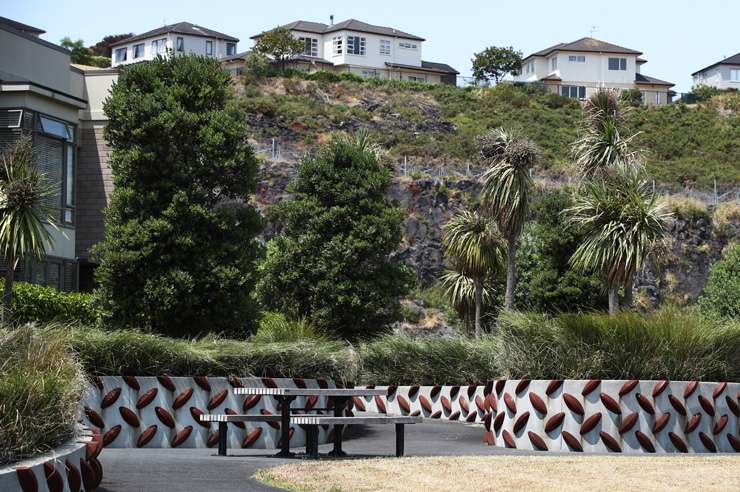Humans have a pretty shoddy record when it comes to predicting what cities will look like in the future. Think Back to the Future 2. In the mid-80s, everyone thought the suburbs would be in 2015 full of flying cars, hover boards, robot dog-walkers and self-fitting Nikes.
None of that has come to pass. So how do designers and developers create suburbs that will stand the test of time?
Start your property search
Katja Lietz, deputy chief executive of urban development planning at Kāinga Ora, says a good starting point is a design that’s resilient and responsive to changing needs.
She highlights a key shift that’s likely to happen in the future: how we use cars and the amount of space they take up. “For example, I’m quite wary of people at the moment who are adamant we ought to design our cities around self-driving cars,” she says.
“That may or may not be our future and ideally we will have cities that should cope with self-driving cars but that also could cope with all sorts of alternative future scenarios.”
While Kiwis rely heavily on cars now, Lietz thinks there may be fewer in the coming decades, with petrol costs rising and people deeming them less desirable, which means futuristic thinking is needed around enabling people to get around easily for their everyday needs.
And while technology is moving fast – in the UK paramedics are trialling jetpacks to get up hills fast - Lietz’s view is technology itself is not likely to bring about big, big changes, but that people’s response to technology may, from concerns around the environment to sustainability.
The fundamentals of how we live, however, won’t change and that includes people enjoying each other’s company which is what master planned communities like Hobsonville Point, in Auckland, bring.

The bare land at Auckland’s Hobsonville Point before construction on the new suburb began. Photo / Supplied

How the master-planned community took shape. Photo / Supplied
An already emerging trend is towards more local living and the role of the communities and neighbourhoods that people live in. “Even if we can Zoom each other and work in virtual reality I think there will still be a desire to meet other people,” Lietz says.
“I feel a little bit like we’ve been in a period where people have wanted to live in exciting cities and the definition of that has been what downtown has been like and that perhaps people accepted they might be living in suburbs that really are quite awful.
“I think now we’re moving into a time where people sort of want both. They want to be able to walk around their local neighbourhood and it being pleasant, knowing some people, being able to do some things local and also being connected to the things a large city as to offer.”
At Hobsonville Point this was factored in, from the positioning of parks and greenery to shared communal spaces, and that future where cars may be less dominant has also been thought about because cars take up a lot of space, Lietz says.
“I think that’s a discipline that’s just emerging, and I can see that getting more important in the next 30 years, that while we might be designing for extra lanes of traffic or buses right now and perhaps carparking as required, that in 30 years, or it might be 50 years, that might not be needed and that space for car parking has been designed in a way that can be repurposed for something else.”

Planning chief Katja Lietz: “The stuff built 100 years ago is much more resilient than the stuff built 50 years ago.” Photo / Supplied
Hobsonville Point currently has the expectation every home has somewhere for a car but this is a talking point for planners. “If you have an individual car space outside your home you can’t really do much else with it, but if you are part of a whole city block, if the car parking is grouped, then that car space might actually be big enough for the people that live there and own those carparks to come together and say we don’t need them, what are we going to do with that space now?
“That could be anything from building some more homes to a small community centre. I think grouping carparking is a really good thought because it gives you more options.”
Car sharing may become much bigger along with the whole “sharing economy”, Lietz says.

A vision of the future? Cities more likely to evolve with the changing needs of residents rather than making big leaps. Photo / Getty Images
“Perhaps we won’t want to own absolutely everything but we want to have access to it, whether that’s a lawnmower or a car or tools and all the other pieces of kit we’ve got lying around at home we might use twice a year.”
Another change will probably be around climate change and sustainability, which Lietz sees as both a necessity and a demand from the younger generation.
“I think there will be a groundswell of things we do now just simply becoming unacceptable and I think some of those things will have an impact on the built form and on master planned communities, perhaps around being more deliberate around how waste is handled, allowing for composting and those things, perhaps more shared opportunities for renewable energy.

Density done well: Housing in Hobsonville Point. Photo / Supplied
“We’re already seeing solar panels on more homes now but perhaps there will be more a move towards shared generation, perhaps an apartment block where in a communal area you might have some electricity generation.
“I think there’s already quite a drive towards bringing biodiversity into master planned communities in terms of bird life and so on and, again, I can see that becoming more important.”
Kainga Ora is also looking at the mistakes of the past in other areas and trying to fix them, such as in areas like Northcote, Mt Roskill and Mangere.
“We go into places that have been built in the 50s or 60s and we are reconfiguring roading patterns and land use patterns.
“I think the historic pattern of urban development is really interesting because the stuff built 100 years ago is much more resilient than the stuff built 50 years ago, like grid street patterns have been much more flexible to changes in use and intensification than a whole lot of curved and linear cul de sacs that were popular in the 50s.

The master-planned community at Stonefields, in Auckland. Photo / Fiona Goodall
“If you’ve got relatively logical street patterns with square blocks where you can go ‘I can take those four homes out and I can build an apartment block if suddenly the area I’m dealing with moves from being suburban to being really central because our city’s got so much bigger”’.
At Hobsonville Point, Universal Homes was involved from the start and has around 700 to 800 homes there now.
Sunil Prasad, now a project developer for the West Hills development at nearby Westgate, says learnings from Hobsonville Point fundamentally changed how Universal approaches building design.
Before Hobsonville Point the medium to high density product was rare and there wasn’t the knowledge base for that sort of typology.
“Terrace housing and apartments are more dense than a lot of other housing so it was a quick learning curve for all of us, not just for the people planning it but the people building it, as well the people selling it.”
The vision document from HLC (the Hobsonville Land Company) was clear and centred around high density living with a focus on community interaction.
“At the moment if you live in an old development in a brick and tile home with a 1.8m fence around it, people don’t even know who their neighbours are.
“At Hobsonville Point it was done so that people interacted more with their neighbours and it was more for that community feel. That was the main push behind the way the Hobsonville Point was designed and I think they did it correctly because the parks and all that came earlier on in the piece.”
His company learned about building on “super lots” with the houses having road facing living rooms and outdoor living spaces with low fences so people could talk to each other.
When a house opens up to the street and spills out to the roads and laneways there is a perception of a bigger space, giving people quality living areas even in smaller terrace housing spaces, and cost was also a factor here.
First home buyers using the first home buyer grant are restricted to $650,000 but Prasad says he can’t produce a standalone home on that size site for that amount.
“It will have to be a 450sq m- wide two-bedroom terrace.”
He thinks the master planned approach is the future now and while people viewed Hobsonville Point with caution early on, once they started to see the boardwalks, schools, food and beverage precinct and wider streets where they could walk or cycle come to be they realised it was something new and good.
While Hobsonville Point is largely built now, Prasad sees such master planned communities evolving further over time.
“As the intensification grows and grows there’s been noises out there about build-to-rent properties and co-living properties or senior living, you know, people over 55 communities, so things are going to evolve a bit more as time goes on.”
- This content was created in partnership with Kāinga Ora








